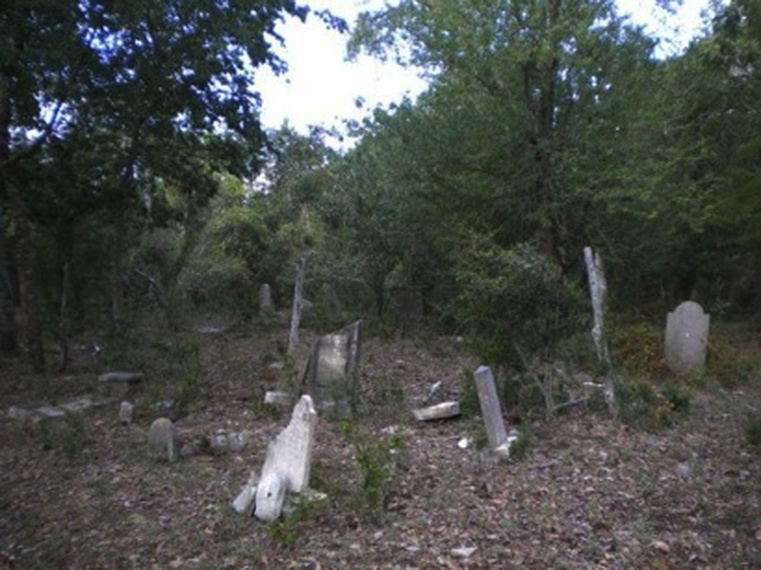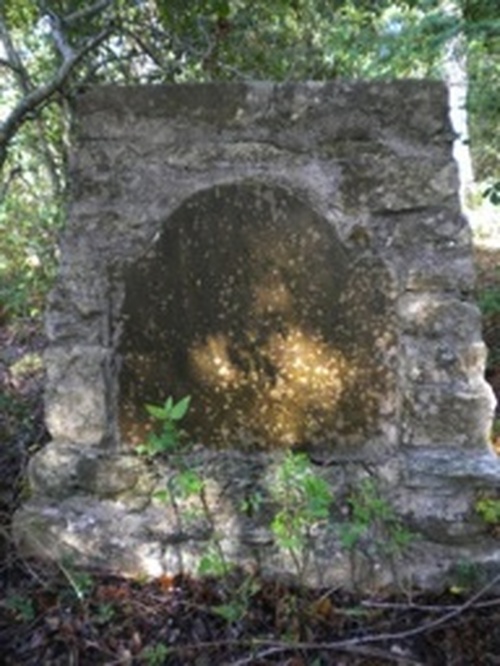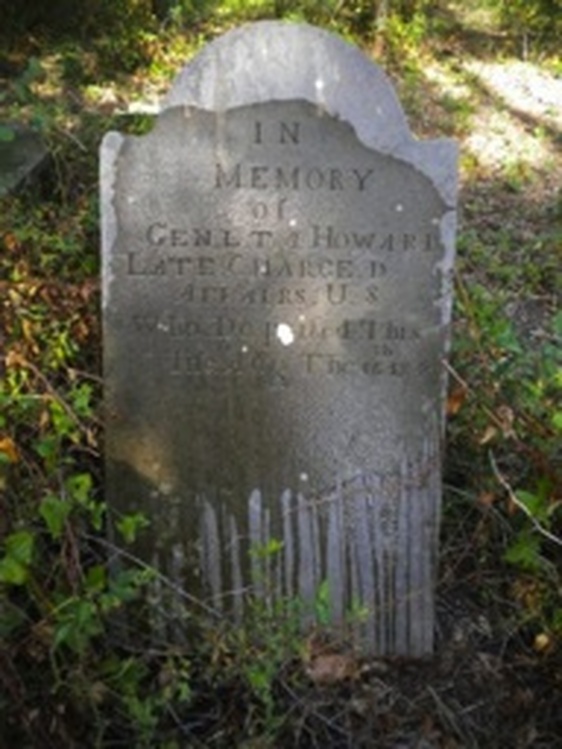|
(Text and Photos by Betty Dunn)
James Lockhart Farquhar is a forgotten man in the annals of Washington County, Texas history. He was a wealthy planter arriving at Washington-on-the-Brazos from Hinds County, Mississippi in 1840. He was one of the original founders and board of trustee member to establish Baylor University at Independence. Farquhar died in 1873. His will created the historic Farquhar Cemetery on his property: “On the hundred acres land given to my wife Dieppe Farquhar there is a public grave yard of one acre of land with right of way from public road from Washington to Independence. This grave yard is to be laid out in a square and is excepted with the right of way as aforesaid in the gift to my wife Dieppe.” Farquhar’s land was on the old Independence Road near where Lone Star Road (CR 95) now intersects with William Penn a short distance north of Highway 105. The cemetery, in 1970, was described as a “scattering of broken and buried stones beneath ancient oaks.” (As the photo above shows this historic cemetery has and continues to be abused by grazing cattle and general neglect.) The grave yard actually began to exist long before Farquhar’s death. Evidence of the earliest burial in this cemetery was in March 1843. It was that of Colonel James R. Cooke (Cook), a veteran of the Battle of San Jacinto and the 1842 Somervell Expedition, who was shot dead at Washington-on-the-Brazos by a friend in an argument over a horse. (See photo of grave monument above.) Several members of the Farquhar family are buried in this cemetery. At this time there are two damaged stones for his daughters, Amanda and Josephine. Amanda married Josiah T. Grant in 1846 but died nine years later in October 1855. A large, though cracked and damaged, slab covers her grave. Three children had been born to Amanda before her death. Her son, William F. Grant, later became a Confederate Army veteran and educator. He died in 1932 and is buried in the Texas State Cemetery. A grave marker split in two pieces exists for daughter Josephine. She married Stephen J. Walker in 1872 but died in April 1892. They had two daughters, Annie and Ruby. Walker became a prominent cotton and grain merchant in Navasota in partnership with J. W. Rodes. (Several members of the Rodes family are buried in the Farquhar cemetery as evidence by remaining but damaged grave stones.) Farquhar’s daughter, Elizabeth, married William H. McCutchan in 1847. She died sometime before 1854. It is possible she could be buried in the Farquhar Cemetery. A fourth daughter, Celestia, married William A. Shannon in 1851. They had one daughter, Huldah Lee. Shannon died during or shortly after the Civil War. Celestia remarried to Major John A. Vernon in 1865. She eventually survived Vernon and was Farquhar’s only daughter to live to elderly age. She died in 1910 at the age of 74 and is buried in the Hempstead, Texas cemetery. It can be assumed that two of his sons, Felix and Bannister, are buried in the Farquhar Cemetery. Felix was wounded in the Civil War and was killed in November 1867 when Union soldiers shot him during Brenham’s racial conflicts. Bannister died in 1879 when he was shot dead after a long time feud with a local citizen. Bannister was married and had a son that survived him. Farquhar’s son, Cornelius C., died in the Civil War Battle of the Wilderness. A youngest son, William, lived to adulthood and died at the age of 62 in 1917 at Edna where he reared a family. He is buried there in Edna’s Memory Gardens Cemetery. The assumption can with, near certainty, be assumed that, though no markers survive, Farquhar himself is buried in this cemetery as are his first wife, Huldah and her sister, Dieppe, who became his second wife following the first wife’s death. A more recent land owner who no longer owns the cemetery property recalls a monument dedicated to Farquhar that was inscribed that he had served as President of the Board of Trustees of the Baylor University of Independence. Another prominent burial in the Farquhar Cemetery was that of General Tilghman Ashurst Howard, the U. S. Charge D’affaires, appointed by U. S. President Tyler to deal with Indian affairs. Howard, of Indiana, left his home in the summer of 1844 for Washington-on-the-Brazos. He arrived ill and, staying at the Farquhar home, died in the home of a stranger within fifteen days of his arrival. He was buried in the Farquhar Cemetery. A large stone still stands at his grave site though three years later, in 1847-48, the governor of Indiana had his remains disinterred and returned to his Indiana home. Another local notable buried in the Farquhar Cemetery was R. M. Whitman, described as a doctor, preacher and farmer, who founded the nearby community of Whitman. This village no longer exists. Whitman was a late comer to the area in 1868 following two of his sons, James and Edward, after the Civil War. Born in New Hampshire in 1804 Whitman acquired wealth in Tennessee as a planter and stock trader. He died in March 1873 living with his sons at the little town of Whitman. A weathered gravestone still marks his burial spot. He was survived by a third wife and other living children. In all, at this time onwww.findagrave.com twenty-five burials are recorded. |
Farquhar CemeteryColonel CookGeneral Howard |



